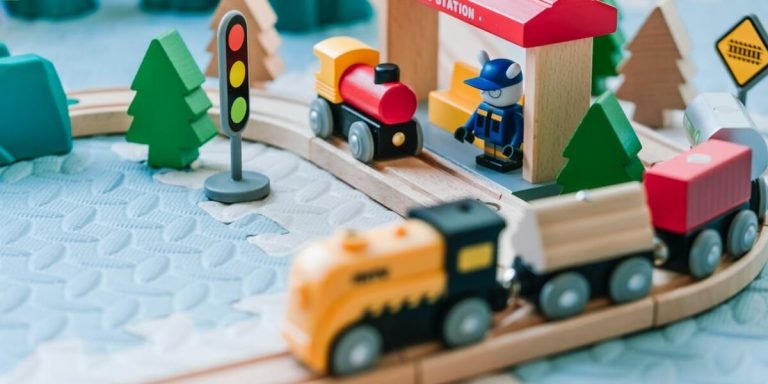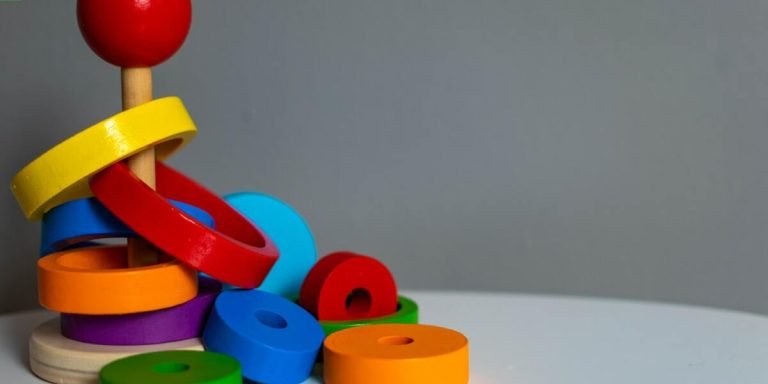Sensory Seeking Toddler: Understanding and Navigating their Unique Needs
Navigating the world of a sensory seeking toddler can often be an overwhelming experience. This unique stage in child development is characterized by an increased desire to explore and engage with their surroundings using all senses – sight, sound, taste, touch and smell. As they try to make sense of this vast new universe around them, it’s crucial we understand their needs better.
In doing so will not only help us provide enriched environments for these young explorers but also shape effective strategies tailored for them under Special Education Resources. Recognizing what stimulates these toddlers’, how they seek out certain sensations over others and ways to support such behaviors are vital aspects towards ensuring optimal growth during their formative years.
Did you know?
Did you know? Sensory seeking toddlers, who constantly crave more sensory stimulation, often grow up to be innovative adults. They bring a unique perspective because of their heightened engagement with the world around them.
Understanding Sensory Seeking Behavior in Toddlers
Understanding sensory seeking behavior in toddlers can be a turning point for parents and educators when it comes to childhood education. This is particularly true now, as we find ourselves navigating the increasingly digital landscape of 2023 where technology integration in education has become a norm rather than an exception.
Sensory-seeking toddlers are those who demonstrate an increased desire to seek out certain experiences that engage their senses. They could crave intense physical interactions like running or jumping, relish messy activities such as painting or finger food play; they may even respond remarkably well towards bright colors or stimulating sounds – all part of their natural instinctive ways to explore and understand the world around them.
Ironically, this intricate connection between learning through senses and modern-day technological tools offers myriad opportunities not just for regular but also special educational needs. Apps tailored specifically for sensory seeking youngsters have been flooding the market with options ranging from interactive stories that let kids touch-and-feel characters on screen right down to augmented reality-based games encouraging real-world exploration complemented by digital elements.
Advancements in assistive technologies support children with non-traditional learning preferences. Vibrating pillows offer tactile input and make reading sessions comforting. Noise-canceling headphones reduce auditory distractions and enhance focus during e-learning modules. Room projectors transform walls into calming spaces that nurture development without stressing sensitive students.
Identifying the Signs of a Sensory Seeking Toddler
Recognizing the manifestations of a sensory seeking toddler can be challenging, considering how varied these signs might appear. It’s crucial for parents and educators to understand that toddlers who exhibit such behavior are not being defiant or difficult, but rather experiencing a genuine need to satisfy their sensory input requirements.
Initially, one observable sign is an unusual attraction towards bright colors or moving objects. This could manifest as your child constantly staring at spinning ceiling fans or becoming excited by vibrant visuals on TV screens than usual children of their age cohort would typically show interest in.
Secondly, increased physical activity levels also signify sensory seeking behaviors. If you notice your toddler jumping around frequently without appearing tired or restless after long durations of playtime – it may not just be high energy-levels typical for this development stage; instead they are trying to meet certain tactile sensations gaps through vigorous activities.
Thirdly, if your young ones tend to get unusually close while interacting with other individuals – like standing too near when speaking or preferring tight hugs – chances are they’re displaying symptoms related with sensory seekers’ ownership tendency over personal space boundaries due its soothing effect amidst overwhelming environments.
How Sensory Needs Influence Learning and Development
“Understanding sensory seeking behavior in a toddler could be instrumental to their learning and development journey. Remember, every child is unique, but there are common characteristics you can look out for in your ‘sensory seeking’ toddler.
One of the primary indicators may include an intense desire or need for certain textures or movements; this might lead them to constantly chew on items, spin around excessively, make excessive noise with objects they find – all just part of their methodical process towards understanding their world better. Acknowledging these behaviors early allows educators and parents alike to integrate suitable strategies that cater to these sensory needs into education plans.
When we talk about technology integration in 2023’s educational landscape as it pertains specifically to our sensory-seeking toddlers – solutions have never been more innovative. Tech-aided toys such as interactive puzzles engage tactile input while audio-books facilitate auditory engagement. These resources satisfy a child’s yearning for particular sensations without disrupting conventional classroom activities.
Moreover, the use of specialized mobile apps aids children who exhibit stronger tendencies towards kinesthetic learning by converting theoretical concepts into tangible interactions thereby improving knowledge retention.
Strategies for Supporting a Sensory Seeking Toddler at Home
With the dynamic shift in educational strategies, technology has proven to be a crucial ally. For parents of sensory seeking toddlers at home, it plays an even more substantial role. Sensory-seeking children are those who crave specific stimuli — tactile experiences like squishing play dough or jumping on trampolines that enrich their senses and help them learn better.
These stimulations can become challenging for parents trying to balance their child’s needs with these unusual routes of expression.
Technology integration provides us with innovative solutions tailored specifically towards special education resources and support networks for such situations. Applications designed explicitly for sensory-seekers offer platforms brimming with interactive activities promoting motor skills development while satisfying the need of interaction, often presenting plans involving textures, noises and movements.
But beyond digital applications, other tools also harbor potential benefits; projectors illuminating bedrooms walls as starry nights provide visual stimulation while therapeutic swings installed indoors mimic playground adventures offering vestibular input- they’re advantageous additions catering your little one’s cravings right from the comfort of home.
We have entered 2023 – a year of transformative advances in childhood education. These methods focus on inclusivity and intellectual growth without constraints, unlocking new opportunities. They light up unexplored pathways, satisfy curiosity, and build strong character foundations. This process shapes future leaders by showing that daily differences begin with embracing diversity, recognizing individuality, and appreciating specialized approaches to talent development. Nurturing dreams and creating success stories foster resilience as children mark milestones on their journey of discovery – overcoming challenges, breaking barriers, aiming high, and conquering the world!
Incorporating Sensory Play into Daily Routines
To support your sensory seeking toddler, integrating sensory play into daily routines is crucial. Sensory play refers to any activity that stimulates a young child’s senses: sight, smell, touch, taste and hearing. These activities can greatly help kids explore their world in a safe environment while also nurturing their cognitive growth.
Firstly, start the day with some tactile stimulation such as finger painting or playing with kinetic sand. This not only entertains them but aids in developing fine motor skills. It’s an excellent strategy for incorporating learning and fun together early in the morning.
Secondly, encourage olfactory exploration by involving your toddler during meal preparation time where they get exposed to different scents of ingredients used in cooking. One could even make this practice educational by giving brief information about each ingredient involved – all aimed at bolstering the intellectual development alongside igniting curiosity.
Next would be auditory stimulation; incorporate this aspect during downtime post lunch when toddlers are settling down from highly active games played earlier on in the day- nothing soothes better than rhythmical music or nature sounds which have been scientifically proven beneficial for holistic health improvement including brain function enhancement among children especially a “sensory seeking toddler”.
A visual-oriented task like sorting colored blocks could follow snack times thereby aiding shape recognition apart from color identification teaching them important organizational skills subtly influencing logical thinking capabilities too!
Choosing Appropriate Toys and Equipment for Sensory Stimulation
Choosing the right toys and equipment for your sensory seeking toddler can significantly enhance their learning environment. These resources not only cater to their natural curiosity but also stimulate different senses, leading to better cognitive development.
Firstly, consider colorful building blocks. Blocks with various textures are an excellent choice because they engage multiple senses simultaneously. They come in a range of colors and shapes that appeal visually while tactile variations serve a dual purpose as playthings and tools for sensory exploration.
Another highly recommended item is kinetic sand or playdough which provide smooth texture experiences useful in calming irritable toddlers. Its pliability allows children to mold it into many shapes thus promoting creativity along with motor skills enhancement.
Additionally, technology plays a vital role in educating these youngsters today more than ever before – this is 2023 after all! Educational tablets loaded with interactive games engineered specifically for special needs education have shown remarkable results when combined catalytically traditional teaching methods at home or schools.
Interactive toys like puzzles integrated via Augmented Reality (AR) give kids visual cues making the process socially engaging whilst developing problem-solving abilities cultivating critical thinking from early age onwards.
Navigating Special Education Resources for Additional Support
Understanding the needs of a sensory seeking toddler can be an uphill task, especially for parents and educators who are new to this concept. In recent years, we have seen significant strides in integrating technology into education. This evolution has paved the way for more personalized forms of teaching that meets every child’s specific requirement.
Special Education resources offer additional support to children with special requirements such as sensory-seeking toddlers. With advancements in educational technology approaches like Virtual Reality, specifics apps and software – teachers can now create immersive learning experiences tailor-made for each child’s assuagement.
This form of targeted approach goes beyond just increasing accessibility; it nurtures inclusivity as well. Every step taken towards including these unique learners ensures they not only understand but also enjoy their journey through education. After all, ensuring that no student gets left behind is what makes us move forward collectively.
Accessing Professional Assessment and Intervention Services
In the realm of childhood education, when dealing with a sensory seeking toddler, there can be marked benefits in accessing professional assessment and intervention services. These resources are tailor-made to cater to your child’s specific educational needs.
As we navigate through 2023, advancements in technology have broadened our capabilities for special education. Specialist organizations now offer diversified platforms where parents and educators alike can access robust Special Education Resources and Support (SERS). Thanks to such technological integration into education systems worldwide, help is just a click away!
Parents may wonder what these services could include – here’s how they work: One-on-one sessions that involve both therapists and children interactively working together via video calls provide unmatched convenience while reaping all possible benefits from therapy sessions without leaving home!
Additionally, dedicated apps targeted towards helping sensory-seeking toddlers develop essential life skills will make learning enjoyable yet effective—all you’d need accessible right at your fingertips.
Utilizing Community Programs and Online Support Networks
Exploring the varied landscapes of education, one cannot ignore the paramount role played by community programs and online support networks in enriching a sensory seeking toddler’s educational journey. In this digital age, technology integration has been transformative especially for special education resources to extend additional support.
Community programs propel hands-on learning opportunities through myriad activities tailored towards fostering specific skillsets amongst individuals. These interactive sessions are instrumental in channeling efforts effectively addressing distinct requirements of a sensory seeking toddler – from curiosity-driven explorations to creative engagements that promote motor skills development.
In 2023, various types of community outreach initiatives have materialized into robust platforms extending comprehensive solutions catering to unique needs. Wellness workshops focusing on healthful practices or play-and-learn events stimulating cognitive growth – these resource-intensive endeavors carve out pathways facilitating holistic development.
Conclusion
Understanding and managing the needs of a sensory seeking toddler can be an incredibly rewarding journey. When we navigate it with patience, empathy, and equipped knowledge, we help them embrace their unique selves while also paving ways for healthy development.
Discover more nuggets of wisdom on our website to support your parenting or teaching endeavors further. We have countless articles on childhood education techniques that are carefully curated for parents and educators alike who are eager to shine light in young minds – making learning not just effective but fun too! So why stop here?
Extend this enriching journey by exploring other related topics right away.







